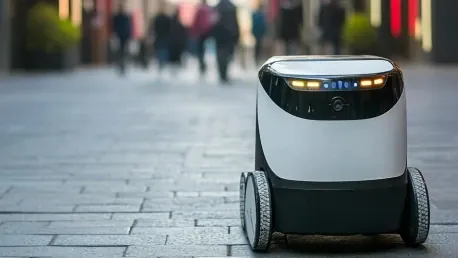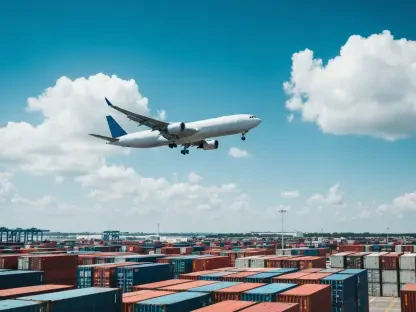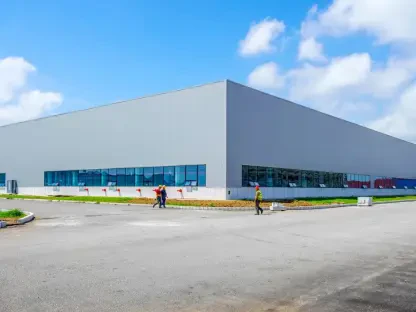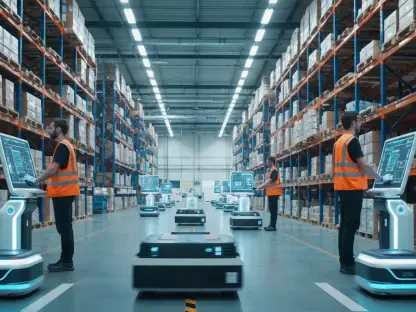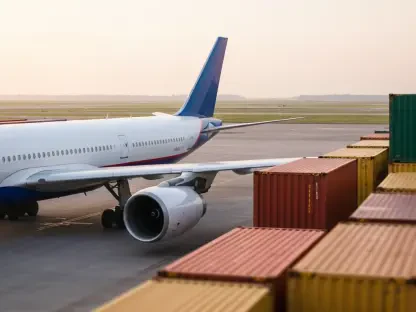In recent years, the logistics industry has seen a significant shift toward automation and digitalization. Amidst growing demands from e-commerce, manufacturing, and other industrial sectors, the logistics robots market is projected to reach a staggering USD 33.08 billion by 2032. This article delves into the factors accelerating this growth and examines how advancements in technology, governmental support, and market segmentation play a crucial role in shaping this dynamic market. The evaluation of these elements underscores a strategic movement toward efficiency, speed, and precision that robotics brings to the logistics domain.
Market Growth and Projections
The logistics robots market has witnessed exponential growth, with a valuation of USD 8.39 billion in 2023, and forecasts showing a projection to USD 33.08 billion by 2032. This remarkable increase, with an anticipated CAGR of 16.47% from 2024 to 2032, underscores the escalating reliance on automation technologies to meet industrial demands. This robust market expansion is primarily driven by the significant uptick in e-commerce transactions and a pressing need for faster delivery solutions in an increasingly digital economy. As online shopping continues to flourish, the logistics sector must keep pace with rapid, efficient processing and delivery of goods.
The surge in online shopping, particularly highlighted by 2023’s growth metrics where e-commerce accounted for 22% of U.S. retail sales, illustrates the escalating demand for logistics robots. Consumers’ expectations for quick and reliable shipping have pushed retailers to seek advanced automation solutions. Notably, the average order value spiking to USD 90 further emphasizes consumer preference for speed and reliability. This consumer behavior trend necessitates investments in logistics robots to ensure timely delivery and order accuracy, thereby maintaining competitive advantage and customer satisfaction in a fast-paced market environment.
E-commerce and Technological Integration
E-commerce has undeniably become a major catalyst in the logistics robot market’s upward trajectory. Retailers are increasingly turning to advanced robotic solutions to meet the surge in online orders, leveraging automation to streamline their fulfillment processes. This demand extends beyond just speeding up deliveries; it encompasses enhancing the accuracy and efficiency of logistics operations, thereby ensuring a high level of customer satisfaction. The integration of these robotic systems helps in reducing error rates and handling a high volume of tasks that would be challenging to manage manually.
Technological advancements in Artificial Intelligence (AI) and Machine Learning (ML) have significantly enhanced the capabilities of logistics robots. These advancements enable robots to perform intricate tasks with remarkable precision, such as sorting, picking, and placing items. Innovations in sensors and machine learning are particularly instrumental in improving operational efficiency, making logistics robots more versatile and adaptable to various warehouse environments. With AI and ML, robots can now learn and optimize their operations over time, ensuring a flexible and scalable logistics framework. This evolution makes the logistics process more responsive to the dynamic demands of the supply chain.
Government Investments and Legislative Influence
Governmental investments and policies are pivotal in shaping the future of the logistics robots market. Initiatives like the Manufacturing USA institutes and the CHIPS and Science Act, which channel substantial funding into advanced manufacturing and semiconductor industries, provide a substantial boost to robotics adoption. These programs underscore the essential need for logistics robots to manage just-in-time inventory systems. By enhancing both the efficiency and safety of material transport, these governmental initiatives drive the exponential growth of the logistics robots sector, making it more robust and capable of meeting modern challenges.
Federal funding exceeding USD 1 billion towards manufacturing institutes, alongside the USD 52 billion investment into semiconductor manufacturing, demonstrates a strong governmental push towards automation. These initiatives are designed to foster advancements in robotics, ensuring the industry keeps pace with global demands and technological evolution. Government support is not only about financial investments; it also involves establishing infrastructure, creating regulatory frameworks, and promoting research and development activities. Such legislative influence acts as a catalyst, accelerating the adoption of logistics robots and ensuring that they are seamlessly integrated into the industrial and economic frameworks of the future.
Segment-Specific Insights
The logistics robots market is segmented into various types, including Automated Guided Vehicles (AGVs), Autonomous Mobile Robots (AMRs), and robotic arms, each playing unique roles within logistics operations. AGVs, for instance, accounted for more than 41% of the market share in 2023, highlighting their reliability and efficiency in handling repetitive tasks. These vehicles are essential in facilitating smooth workflow and maintaining high efficiency in operations where precision and consistency are critical. Their role in transporting goods within warehouses has significantly optimized intra-logistics, making them a cornerstone of modern warehouse management systems.
Conversely, AMRs are rapidly gaining popularity due to their flexibility and adaptability in navigating dynamic environments. AMRs can independently move around a warehouse, avoiding obstacles and rerouting as necessary, making them highly suited for various logistics tasks. The primary applications for these robots span across palletizing and de-palletizing, pick and place operations, and transportation. Notably, palletizing and de-palletizing applications secured over 40% of the market share, underscoring their critical role in streamlining warehouse processes. By automating these labor-intensive tasks, logistics robots enhance efficiency, reduce operational costs, and improve overall productivity within supply chains.
Regional Dynamics and Growth Patterns
Geographically, North America leads the logistics robots market, holding over 35% of the share in 2023. This dominance is attributed to advanced technology adoption, substantial investments in automation, and highly developed infrastructure. The region’s proactive investment in cutting-edge robotics solutions has set a benchmark for efficiency and innovation in logistics operations. Companies in North America are leveraging robotics to enhance their competitive advantage, demonstrating significant returns on investment through improved operational efficiencies and cost reductions. The high adoption rate of advanced technologies in this region is a testament to its readiness to embrace the future of logistics.
In contrast, the Asia-Pacific region is anticipated to experience the fastest growth due to substantial investments in robotics by countries like China, Japan, and South Korea. Government-backed initiatives like China’s Belt and Road project and Japan’s focus on Industry 4.0 are propelling the adoption of robotics in logistics. These initiatives aim to modernize supply chains, enhance operational efficiencies, and maintain competitive advantage on the global stage. The Asia-Pacific region’s focus on technologically advanced infrastructure and favorable governmental policies make it a burgeoning market for logistics robots, promising significant growth opportunities for stakeholders in the upcoming years.
Major Industry Players and Competitive Landscape
Several key players dominate the logistics robots market, including industry giants like ABB Ltd, KUKA AG, Toyota Industries Corporation, Fanuc Corporation, and Yaskawa Electric Corporation. These companies are at the forefront of innovation, continuously enhancing the functionalities and capabilities of logistics robots to meet the diverse needs of various industries. Their focus on research and development has led to the introduction of advanced robotic systems that are more efficient and capable of handling complex logistics tasks. This commitment to innovation is essential for maintaining a competitive edge in the rapidly evolving logistics sector.
The continuous innovation spearheaded by these industry leaders is crucial for keeping up with the evolving demands of the logistics industry. By developing more advanced, flexible, and efficient robotic solutions, these companies help drive the market forward, ensuring logistics operations remain seamless and effective. Their emphasis on creating sophisticated robotics solutions results in the widespread deployment of robots across different logistics applications, from warehouse management to last-mile delivery. This competitive landscape fosters a healthy market growth environment, stimulating further advancements and adoption of robotics technologies.
Overarching Trends in Automation and Efficiency
In recent years, the logistics industry has undergone a considerable transformation, largely due to advancements in automation and digitalization. Given the increasing demands from sectors such as e-commerce and manufacturing, the logistics robots market is expected to soar to an impressive USD 33.08 billion by the year 2032. This burgeoning market growth can be attributed to several key factors. Advances in technology have significantly enhanced the efficiency, speed, and precision of logistics operations. Additionally, government support has played a pivotal role in fostering innovation and adoption of robotics within the industry. Market segmentation also contributes to this growth by allowing companies to focus on specific niches and tailor their solutions accordingly. As a result, logistics robots are becoming increasingly integral to meeting the modern demands of various industrial sectors. This article explores these driving factors and underscores the critical importance of embracing robotics to sustain competitive advantage in the ever-evolving logistics landscape.
